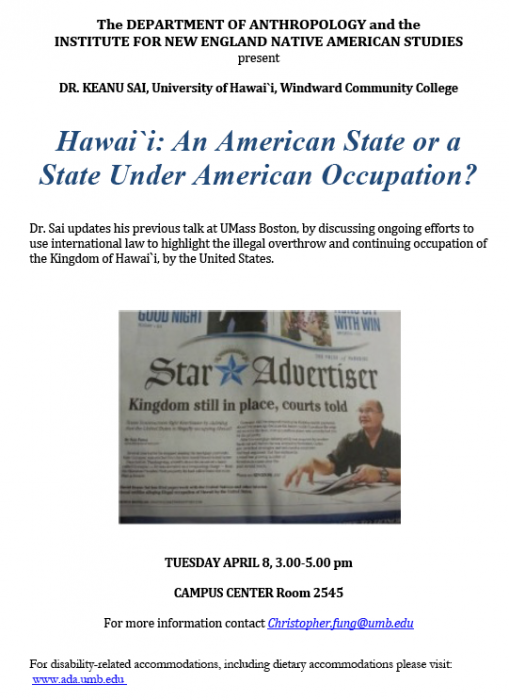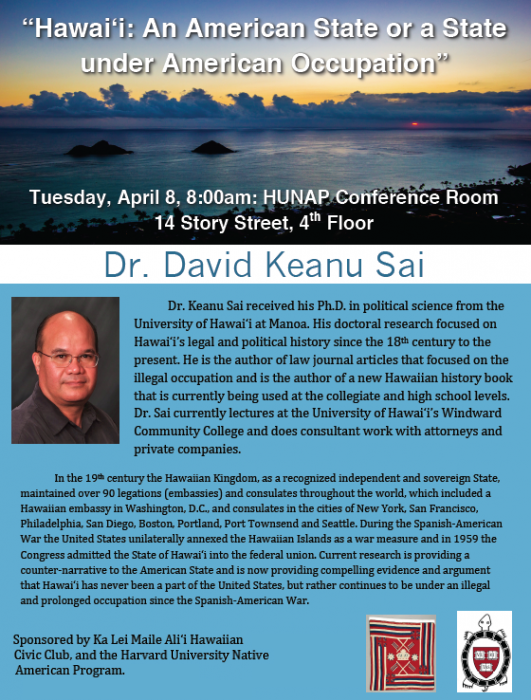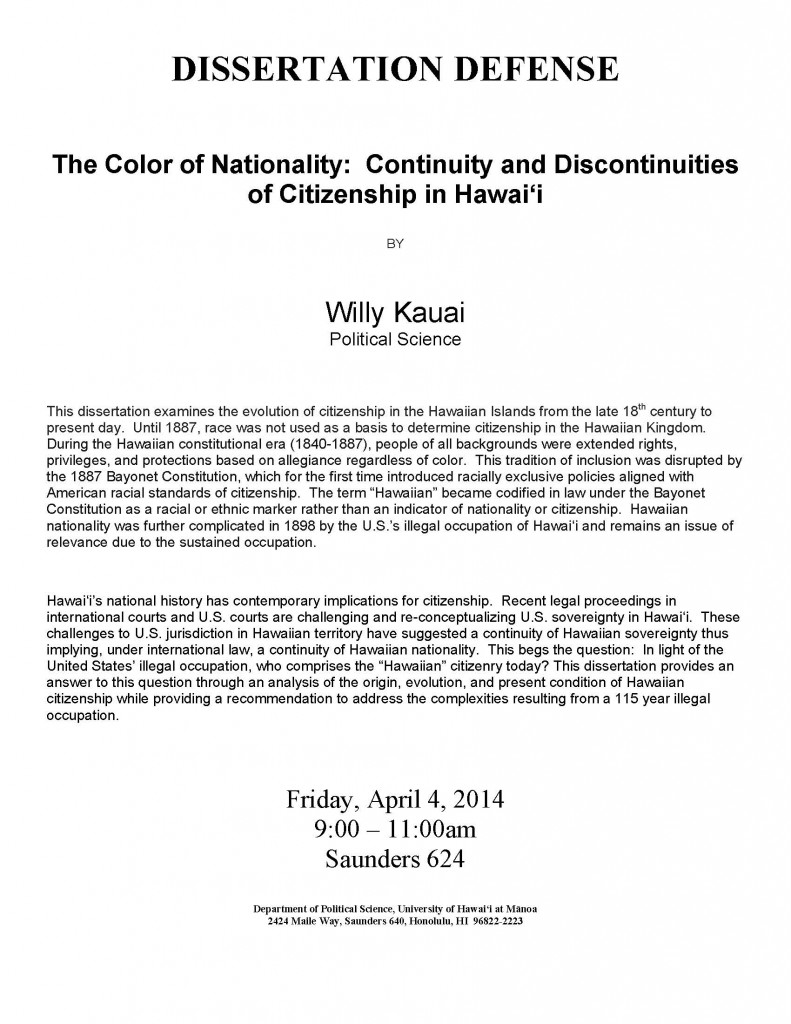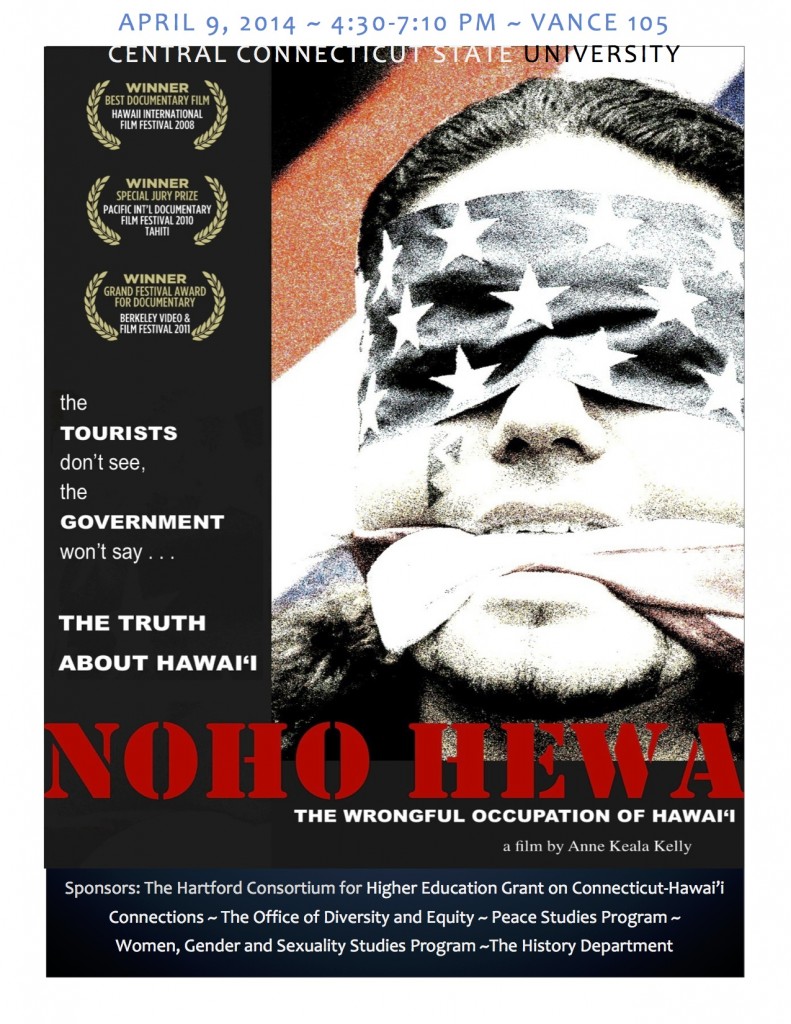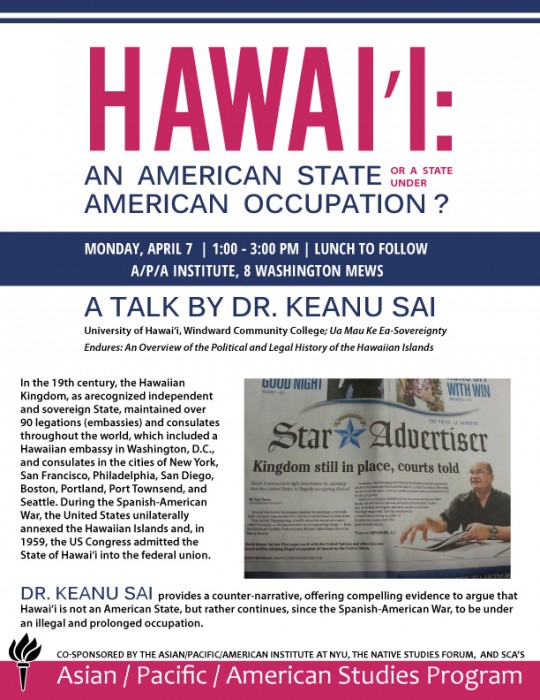This blog is about Hawaii's status as an independent country under prolonged illegal occupation by the United States, and the history, culture, law & politics of the islands.
By Scott Crawford, Hana, Maui
|
Blogs.com Top 10
Hawaii Blogs |
|
Video from KITV.com (about a month old but worth checking out):
Order in the court! The Iolani palace throne room— the very room where former queen Lili’uokalani was put on trial for treason— was turned into a COURT ROOM today— where the overthrow of the Hawaiian government came to life. At first glance… You feel like you have been transported back in time to the trial of Liliuokalani. The palace throne room was set up for the case—- but well over a century later comes a twist: Iolani School history students are putting Lorrin Thurston on trial. He played a prominent role in the overthrow of the hawaiian monarch…

Author: Rosa, John P.;
The Massie-Kahahawai case of 1931–1932 shook the Territory of Hawai‘i to its very core. Thalia Massie, a young Navy wife, alleged that she had been kidnapped and raped by “some Hawaiian boys” in Waikīkī. A few days later, five young men stood accused of her rape. Mishandling of evidence and contradictory testimony led to a mistrial, but before a second trial could be convened, one of the accused, Horace Ida, was kidnapped and beaten by a group of Navy men and a second, Joseph Kahahawai, lay dead from a gunshot wound. Thalia’s husband, Thomas Massie; her mother, Grace Fortescue; and two Navy men were convicted of the lesser charge of manslaughter, despite witnesses who saw them kidnap Kahahawai and the later discovery of his body in Massie’s car. Under pressure from Congress and the Navy, territorial governor Lawrence McCully Judd commuted their sentences. After spending only an hour in the governor’s office at ‘Iolani Palace, the four were set free.
Local Story is a close examination of how Native Hawaiians, Asian immigrants, and others responded to challenges posed by the military and federal government during the case’s investigation and aftermath. In addition to providing a concise account of events as they unfolded, the book shows how this historical narrative has been told and retold in later decades to affirm a local identity among descendants of working-class Native Hawaiians, Asians, and others—in fact, this understanding of the term “local” in the islands dates from the Massie-Kahahawai case. It looks at the racial and sexual tensions in pre–World War II Hawai‘i that kept local men and white women apart and at the uneasy relationship between federal and military officials and territorial administrators. Lastly, it examines the revival of interest in the case in the last few decades: true crime accounts, a fictionalized TV mini-series, and, most recently, a play and a documentary—all spurring the formation of new collective memories about the Massie-Kahahawai case.
Tuesday, March 25, 2014
From Annexation to Statehood
7 p.m., Kapolei High School Cafeteria
A monthly series of public forums in 2014 is meant to build public awareness and create a better understanding among both Hawaiians and non-Hawaiians about what the sovereignty movement means for all the people of Hawaii.
Hawaiian sovereignty will affect everybody in the state. This monthly series of forums comes before the Native Hawaiian convention which will organize a modern Hawaiian government.
Forum #2 still showing on ‘Ōlelo:
- 3/22/2014, 6:00 PM, ‘Ōlelo Channel 53
- 3/29/2014, 8:00 AM, ‘Ōlelo Channel 53
thesovereigntyconversation.org
Lots of sources for this, but here’s one:
Russian President Vladimir Putin, defying Ukrainian protests and Western sanctions, signed a treaty on Tuesday making Crimea part of Russia…
The referendum leading up to it may have been a sham, like the one here in 1959. But Russia knows it still must ratify an actual treaty to give any pretense of legality to the annexation. Notice they didn’t just pass a internal resolution and pretend that annexation can be done unilaterally without even faux consent of the annexed territory using a bilateral instrument. Unlike the U.S. in Hawai’i…
Must-read response from Umi Perkins in the Hawaii Independent to Ian Lind’s followup in Honolulu Civil Beat as their debate continues, primarily regarding the validity or lack thereof of Hawaii’s purported annexation via joint resolution. The good thing about columns like Ian’s, as much as they may be misinformed from my perspective, is that they stimulate responses like Umi’s, to address common questions and delve more deeply and research more thoroughly into the issues, which brings light to the whole understanding. I’ve always believed that the more the true information about Hawaii’s history gets out there and the more it’s discussed, the better, so everyone can be informed and then make up their own minds.
Also, check out this TEDxManoa talk by Umi in which he goes into some of the same points of law and history and also touches in a couple other aspects.
|
|


